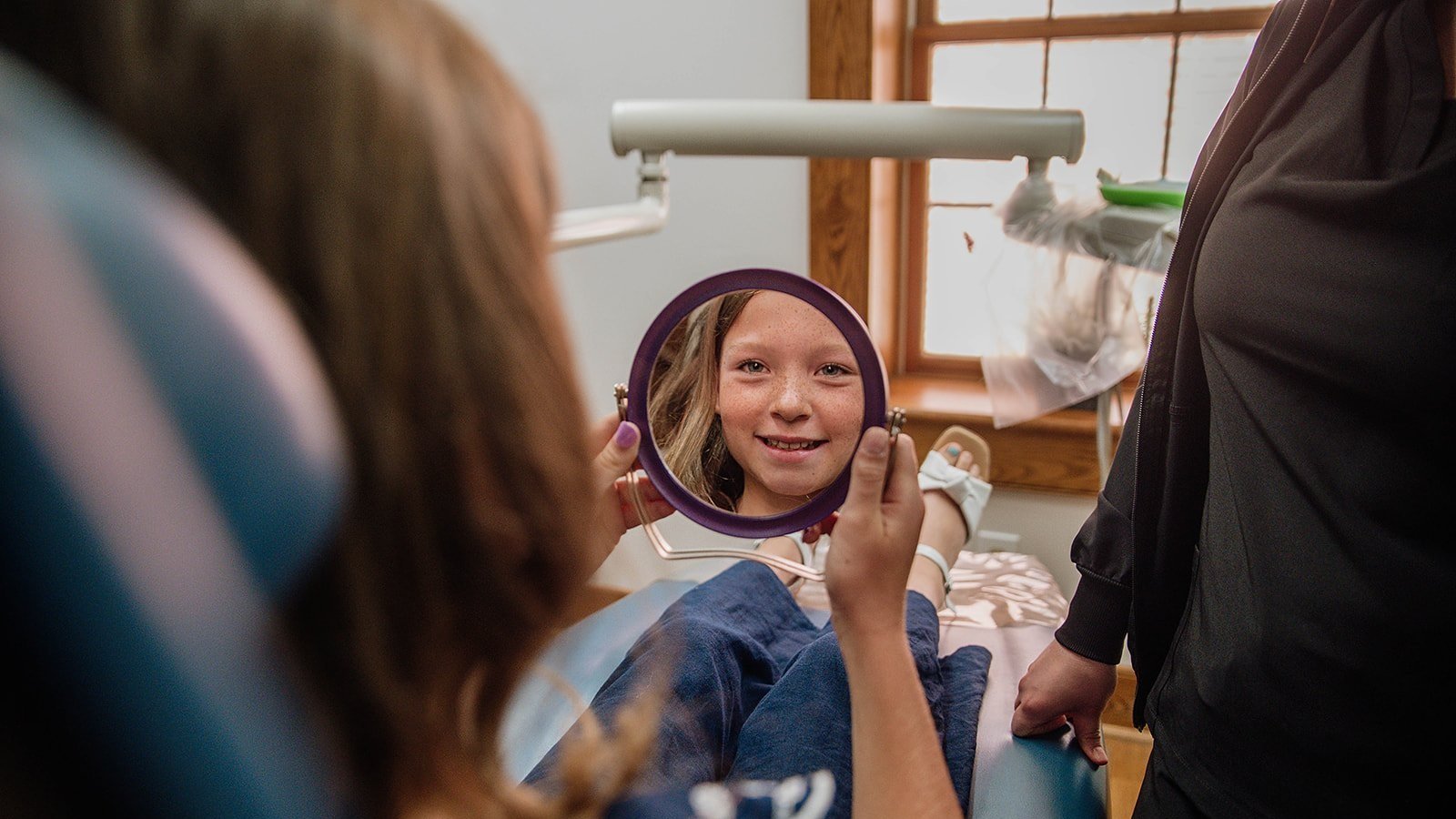

FLUORIDE TREATMENT & XYLITOL
Fluoride is the most effective agent available to help prevent tooth decay. It’s a mineral that is naturally present in varying amounts in almost all foods and water supplies.
Fluoride works in two ways:
Topical fluoride strengthens the teeth once they have erupted by seeping into the outer surface of the tooth enamel, making the teeth more resistant to decay. We gain topical fluoride by using fluoride-containing products such as toothpaste, mouth rinse and gel. Dentists and dental hygienists generally recommend that children have a professional application of fluoride twice a year during dental check-ups.
Systemic fluoride strengthens the teeth that have erupted as well as those that are developing under the gums. We gain systemic fluoride from most foods and water supplies. It is also available as a supplement in drop or gel form and can be prescribed by your dentist or physician. Generally, fluoride drops are recommended for infants, and tablets are best suited for children up through the teen years. Your dental professionals will help monitor the amounts of fluoride a child ingests because too much can cause a condition called fluorosis (white spots on the teeth).
Although most people receive fluoride from food and water, sometimes it’s not enough to help prevent decay. Your dentist or dental hygienist may recommend the use of home and/or professional fluoride treatments for the following reasons:
Deep pits and fissures on the chewing surfaces of teeth.
Exposed and sensitive root surfaces.
Fair to poor oral hygiene habits.
Frequent sugar and carbohydrate intake.
Inadequate exposure to fluorides.
Inadequate saliva flow due to medical conditions, medical treatments or medications.
Recent history of dental decay.
Remember, fluoride alone will not prevent tooth decay! It is important to brush at least twice a day, floss regularly, eat balanced meals, reduce sugary snacks and visit your dentist on a regular basis.

WHAT IS XYLITOL?
Some children are particularly susceptible to tooth decay, even after receiving regular dental examinations and oral care at home. The American Academy of Pediatric Dentistry (AAPD) has recently recognized the benefits of a substance called Xylitol for reducing childhood tooth decay. Xylitol, found naturally in foods, can reduce tooth decay and cavities by as much as 70%.
Xylitol is a natural substance that can be found in a variety of fruits and vegetables. Some of the most common Xylitol-rich foods include berries, mushrooms, corn and lettuce. Study results indicate that 4-20 grams of Xylitol each day, divided into three or more helpings, can reduce tooth decay and cavities by as much as 70%. As a point of reference, a single cup of berries contains a little less than one gram of Xylitol.
It can be difficult to consistently eat four or more cups of fruit or vegetables each day. For this reason, Xylitol is also available as a sugar substitute, a gum, and as a concentrate in numerous health foods.
How does Xylitol work?
The combination of many factors increases susceptibility to tooth decay and cavities, including oral care habits, diet, carbohydrate consumption, sucrose consumption, salivary flow rate and tooth resistance to plaque.
Harmful oral bacteria feed on sugars and carbohydrates, producing acids. When sugary foods are consumed, these acids attack and destroy vulnerable tooth enamel. Xylitol works to neutralize the acids, reducing enamel destruction and minimizing the threat of cavities in the process. Xylitol also stimulates saliva production, meaning that food particles, plaque and bacteria are continually removed from the teeth. When used in combination with fluoride, Xylitol works to remineralize teeth, protecting tooth enamel and minimizing new cavity formation.
Should my child start using Xylitol?
Although Xylitol gum is not suitable for very young children, infants actually benefit from maternal chewing! Mothers of children between three months and two years old who used Xylitol gum several times each day protected their child from tooth decay until the age of five years old. In this case, Xylitol reduced the amount of microorganisms transmitted from mother to child.
Once the child reaches toddlerhood, Xylitol can be consumed as a sugar substitute, or as a natural byproduct of eating fruit and vegetables. Older children can reduce the threat of new cavities by chewing Xylitol gum.
